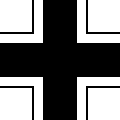| VK 20 series | |
|---|---|
 VK 20 (M) | |
| Type | Medium tank |
| Place of origin | Germany |
| Production history | |
| Designer | Daimler Benz, Krupp, MAN |
| Designed | 1938 to 1941 |
| Specifications | |
| Mass | 20 to 24 tonnes |
| Length | 5.130 to 5.580 m |
| Width | 2.950 to 3.020 m |
| Height | 2.500 to 2.695 m |
| Crew | 5 (Commander, loader, gunner, driver, radio operator) |
| Armor | 40–50 mm (1.6–2.0 in) |
Main armament |
|
| Engine | MB 809, HL90, HL116 300-450 hp |
| Power/weight | 14 to 20 hp/tonne |
| Suspension | Leaf springs or Torsion bars |
| Maximum speed | 50 to 56 km/h |
The VK 20 series were the proposed replacements of the Panzer IV and Panzer III tanks with entries by MAN, Krupp and Daimler Benz. It was initially projected to weigh 20 tonnes, but grew to 24 tonnes. [4] By November 1941, the designs almost reached completion but against the professional judgement of Wa Pruef 6, political interference in December 1941 led to all of the designs being dropped. The root of this adverse decision came from encounters with increasing numbers of T-34 and KV-1 tanks. Reichsminister Fritz Todt declared that a new tank, 30 tons in weight should be designed and produced. Oberst Fichtner argued that time would be lost developing this new 30 ton tank, the number produced would be reduced and engineer bridges could not support such a tank. This new tank chosen from the VK 30 series would become the Panther, replacing the VK 20 series. [5] This decision would place the rushed MAN Panther into production as Germany's new standard medium tank, which was plagued with issues never fully addressed especially those caused by MAN's final drive. [6] It would also arrive too late, with Germany's position in a steep decline, having lost the initiative. [7]
